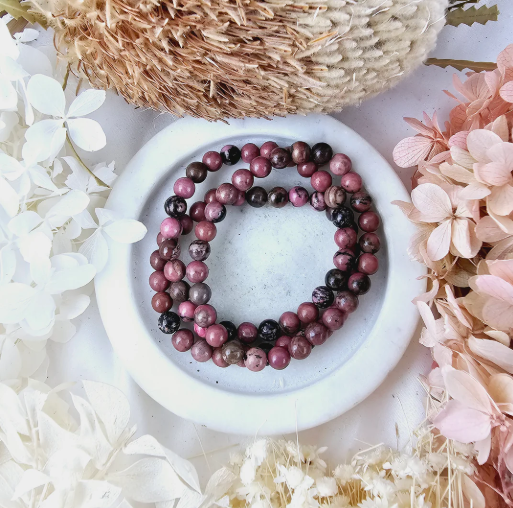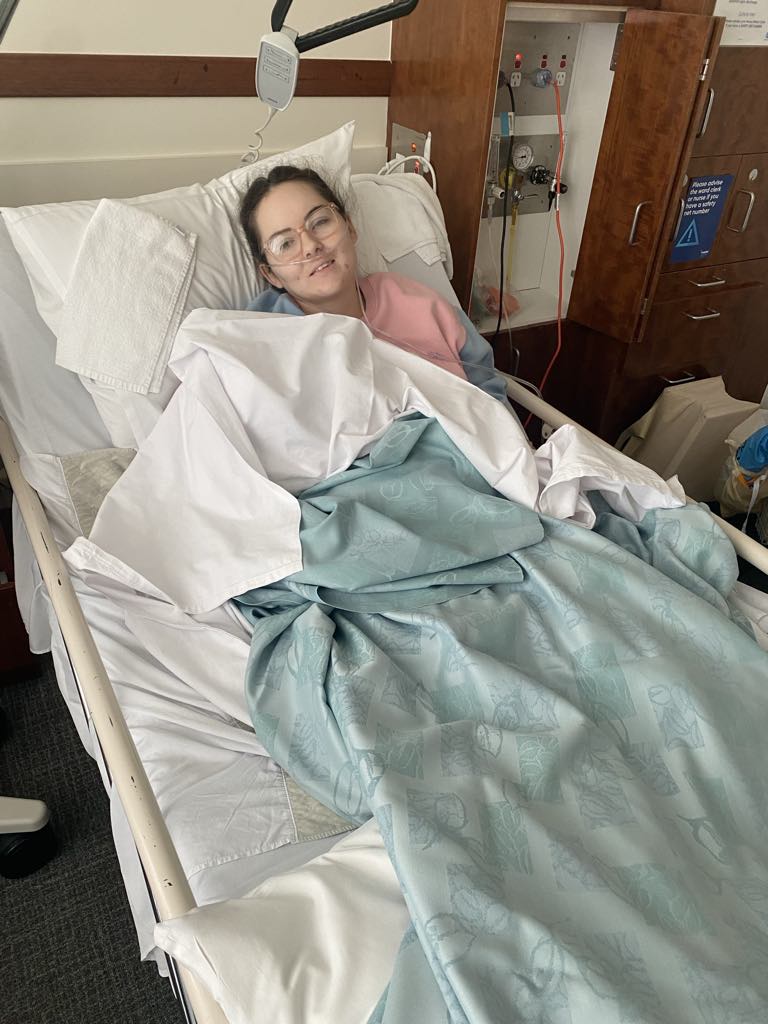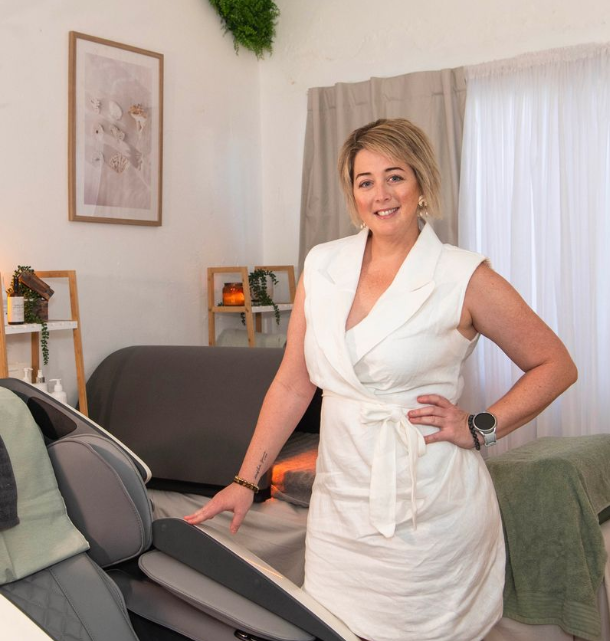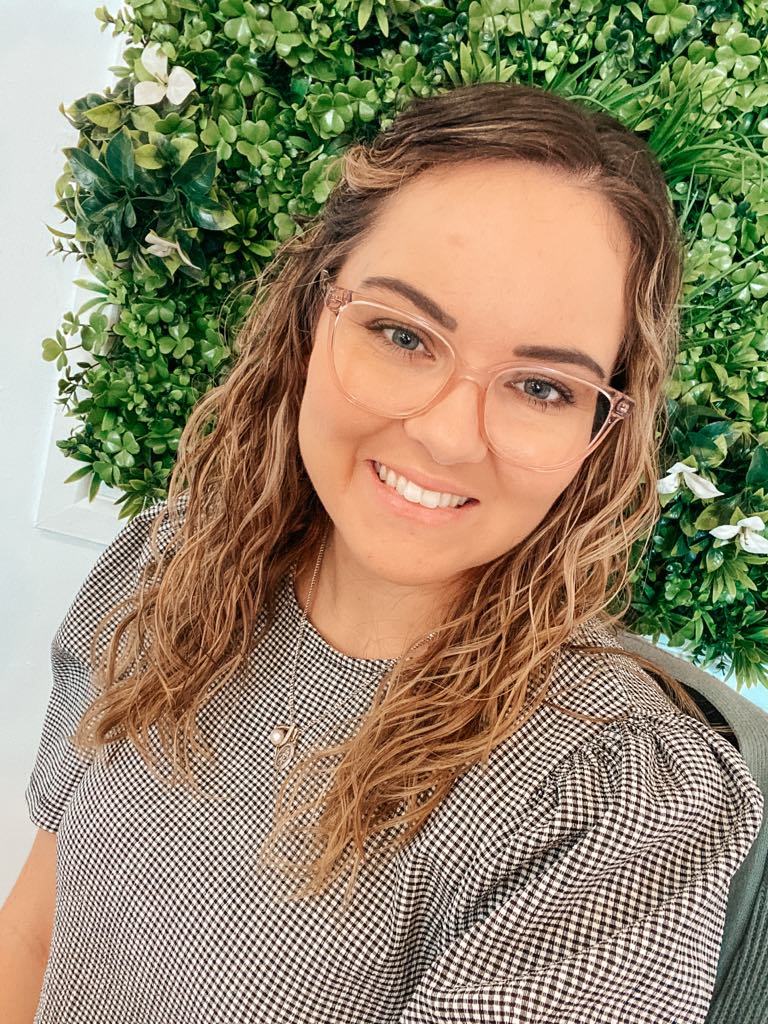My Hip Journey — A Lifetime of Lessons, Surgeries & Strength
When people meet me today, most would never know the journey my body has been through. This is a part of my story that I’ve carried quietly for most of my life — not because I’m ashamed, but because, for so long, it was simply normal for me. But today I want to share it, fully and honestly, because my hip journey has shaped so much of who I am.
Born With a Challenge
I was born with congenital hip dysplasia — one of the 5% of extreme cases. My condition was so complex that my surgeons had to develop experimental procedures to give me the best chance at walking. My first surgery happened before I was even a year old. Over my childhood, I underwent at least eight surgeries (my mum knows the actual count — I lost track).
At birth, the nurse who checked me over to make sure I was ok could see that my hip did not sit in the joint; you could see the bone at my bottom picking the skin (so gross yet cool). I was incredibly blessed to be under the care of two excellent pediatric orthopedic surgeons, Dr. Paul Muzzio and Dr. Paul McQuire. One would even travel from Brisbane (McQuire) to Cairns for my surgeries. My childhood surgeries all took place in Cairns, but most of those I don’t remember, except one that changed everything.
When I left the hospital at only a few days old, I was in my first brace, which I escaped that night. They didn't bother putting me in it again. At 2 weeks old, I had my first appointment with my surgeon, Dr Muzzio, but due to the pain I was in because of my hip, they turned around and went home as I could not sit in the capsule properly. So, my grandad made me a baby capsule from wood that could accommodate my hip and how I needed to be positioned to be comfortable (I'll find a photo to post when I can). At 3 months old, I had my first surgery to place my hip into the joint, which left me in plaster for 6 weeks. Once the plaster was removed, it popped straight back out! What a pest. They did the surgery again at maybe 18months, they tightened the socket to hold the bone in place. This seemed to work and supported me until I was 10 years old. I don't know how, as it wasn't the best-looking hip.
From ages 1 to 2, my way of getting around? The block trolley I used was similar to a skateboard. Nan has a photo of me standing in my cot, fully plastered. I always knew I was stubborn, but dam! My poor mum had to carry me constantly, and those braces and plaster were far from lightweight. Those years would have been hell for Mum as she was a single parent navigating her first child with this disability. I did find out that Nan lived with us for 9 weeks while my Grandad was living away, which would have been a big help.
Grade 5 — The Surgery I’ll Never Forget
In Grade 5, halfway through the year, I underwent one of the most significant surgeries of my life. My femur was broken, and my pelvis was rotated 90 degrees to buy me time — hopefully delaying the need for a hip replacement until I was much older. Let me remind you, I was 10 years old, so this is major surgery! I remember the first thing I wanted when I woke up from surgery was to know if Nan was there. Sorry mum!
When I woke up, I was in full traction with plaster and a bar between my legs to hold everything perfectly still. I spent 7 weeks like this.
Emotionally, it was a challenging time too. My stepfather at the time struggled to handle my situation, leading to stressful moments that made the recovery even harder. Luckily, he did not live with us and was only around sporadically.
Now let me tell you about being in traction. I had to pee in a bucket, and those who are familiar with female anatomy know we do not shoot straight, so Mum had to place pads around the plaster to prevent it from soaking up the wee. It was a definite highlight of life. Not only that, but constipation when you do not move is wild. I had to take medication that tasted like it was poison, and it still did nothing for the booty. Mum was at university at the time, so when she had to go to lecture, I got to hang out with our daycare mum, and let me tell you, she got a better view than Matthew ever has. The poor women!
The day they finally removed the plaster is still vivid in my memory. The sound of the drill, the fear of standing after seven weeks of immobilisation, the rush of weakness as I tried to take my first steps. My body was so fragile that simply walking to the toilet triggered my digestive system into, let’s just say, dramatic action. Not one of my proudest moments as a 10-year-old girl.
We also discovered I was allergic to the adhesive from the steri-strips — the poor nurse who had to remove them did her best to comfort me as my skin peeled away. In the hospital, I remember the K-wires and the fear of falling while my body slowly healed. Once back home, I slowly rebuilt my strength, first with crutches, then on my own. My beloved teacher, Mr Bailey, kept a close eye on me, terrified I might fall and have those K-wires poke through my skin. Thankfully, that never happened.
Learning to Adapt
The hardest part after that surgery was losing my athletic ability. Before, I had loved running and sports. After surgery, I went from being age champion to coming last in every race. That was heartbreaking, but as kids do, I learned to adapt and find new strengths.
Two years later, we moved to Bowen — a fresh start that became a turning point. For the first time, I wasn’t bullied. I was welcomed, accepted, and finally able to enjoy my school experience.
During that year, I had my plate and screws removed — a “simple” surgery by that stage, though my body seemed to struggle with each recovery, requiring me to relearn to walk once again.
Throughout high school, my hip held firm. I developed a high pain tolerance. Yes, it would tire and ache, but I pushed through and found ways to live fully.
Pregnancy & A Whole New Challenge
Pregnancy, however, challenged my hip like never before. Carrying the extra weight and strain pushed my hip to its limits. I often had to sit or lie down to relieve the pain, but my hip still held strong.
That is, until I was 27.
I woke up one morning unable to walk. The pain was overwhelming, and without any warning or injury, my hip failed. After weeks of barely being able to stand, I was finally told what I feared: I would need a full hip replacement.
Waiting For The Call
Unfortunately, in the public system, that meant waiting. Three long years passed before I received a confirmed surgery date: November 25th, 2023. Heartbreakingly, this meant leaving for Mackay on my son’s birthday. I had mentally prepared, said goodbye to my kids who feared for me, and then— the call came.
The surgery was cancelled. The parts hadn’t arrived. There was only one in Australia that met the requirements for the part I needed, and in the event of an emergency, I would not have been able to obtain it. My world crumbled. I returned home without a new date, carrying the emotional weight of another unknown wait.
Surgery Day — Finally
Then came the new date, January 5th, 2024.
I arrived in Mackay, and this time, there was no cancellation. I was taken to the theatre and greeted by my incredible surgeon, Dr. George Banic and his partner.

What was meant to be a 2-to 3-hour surgery turned into a 4.5-hour procedure. The complexity of my hip — years of surgeries, scar tissue, missing soft tissue, fragile bone — made it one of the most challenging surgeries for the doctors to perform.

In recovery, my body struggled. My blood pressure had been lowered to minimise blood loss, causing extreme overheating. I vividly remember sweating uncontrollably while nurses tried to keep me covered with dignity.
Shortly after returning to my room, I went into shock. My body was overwhelmed. Dr. Banic remained cautious, warning me that my hip was very fragile and that my recovery would be more painful than most because of the muscle damage.
A Brutal Recovery — But A Miraculous Outcome
Most hip replacement patients are up and walking the next day. I was in the hospital for 8 days. Even standing for one minute left me lightheaded. But slowly, day by day, I built up enough strength to be released, under strict orders not to place my full weight on the leg for 12 full weeks.

The drive home to Bowen — across bumpy North Queensland roads — was torture. Every pothole and train track felt endless. But finally, I was home. I was safe. I was with my family.

At my follow-up appointments, Dr. Banic was blown away by my progress. He admitted he had serious doubts that the surgery would even take. The condition of my hip when he opened me up was worse than expected. My muscles quite literally “jumped” out at him when he cut into the hip — something he had never seen before. And yet, somehow, my body held on. My hip replacement worked.
Where I Am Now
I still have to remind myself just how far I’ve come. Some days, I almost forget how much pain I lived with for years. My journey with congenital hip dysplasia has taught me resilience, patience, and above all — gratitude.
I have learned to listen to my body. I have learned the value of persistence. And I have learned that sometimes, even when the odds are stacked against you, your story can still turn out beautiful.
This is a part of who I am. And now, finally, it’s a part of my story that I’m ready to share.
💛
With love and gratitude,
Kenley







